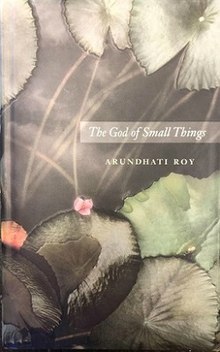This
is a beautiful book. Beauty-full.
Yes,
that is exactly how I would describe writer-cum-social activist
Arundhati Roy’s 1997 Man Booker Prize winning novel, The God of
Small Things. Ms Roy’s brilliant interplay with words gifts the
reader entry to a different world that he can see and feel - and that
is where the beauty lies. The reader can play the scenes in his mind:
the lucid writing ensures the he is seeing the things and not reading
about them. The story is not a surprise; the characters could be the
ones out of any Hindi prime-time soap that we are so familiar with.
Yet, something makes her book different: she creates the
extraordinary out of the ordinary.
The
backdrop is set of the story is set in the small town of Ayemenem in
Kerala, the protagonists being a set of dizygotic twins, Estha and
Rahel. The tale spans a period of almost three decades, telling the
story in flashbacks. The uncanny attachment between the twins is
highlighted. The twins are brought up by their mother, Ammu, who is
divorced, and thus they have nearly no knowledge of their father as
children. Playing vital roles in the lives of the twins are their
uncle, Chacko, who, for them, is a substitute for their father. In a
negative role is their grand-aunt, Baby Kochamma- unmarried, sly and
nurturing a thorough disregard for her niece and her children.
The
book touches the core of both explored and unexplored areas in the
bonds between members of a family. The upbringing of two children by
a single mother has been beautifully described; lessons of growing-up
provided to the children and how they determine their behaviour and
actions have been very cleverly portrayed. The problem of
untouchability that plagues the society plays an important part in
the narrative. On the side, some light has also been thrown upon the
dominance of men over women. In short, the author concentrates on
two main objects in this book: the family and the society.
The
magic of this book lies both in the presentation as well as the
content. However, what makes reading this book an amazing experience
is the exquisite usage of words. I would go so far as to say that Ms
Roy has invented her own, very personal language for this book. The
lion’s share of all my accolades is surely reserved for her
magnificent expression and eloquent comparisons stating the obvious.
Another thing that lends beauty to this book is the author’s
ability to personify objects, animals and feelings and use them in
ways that leaves the reader in awe. It is a book of mysterious
metaphors; the title of the books testifies this very fact. The book
is praiseworthy because it doesn’t say it, and yet says it all.

No comments:
Post a Comment